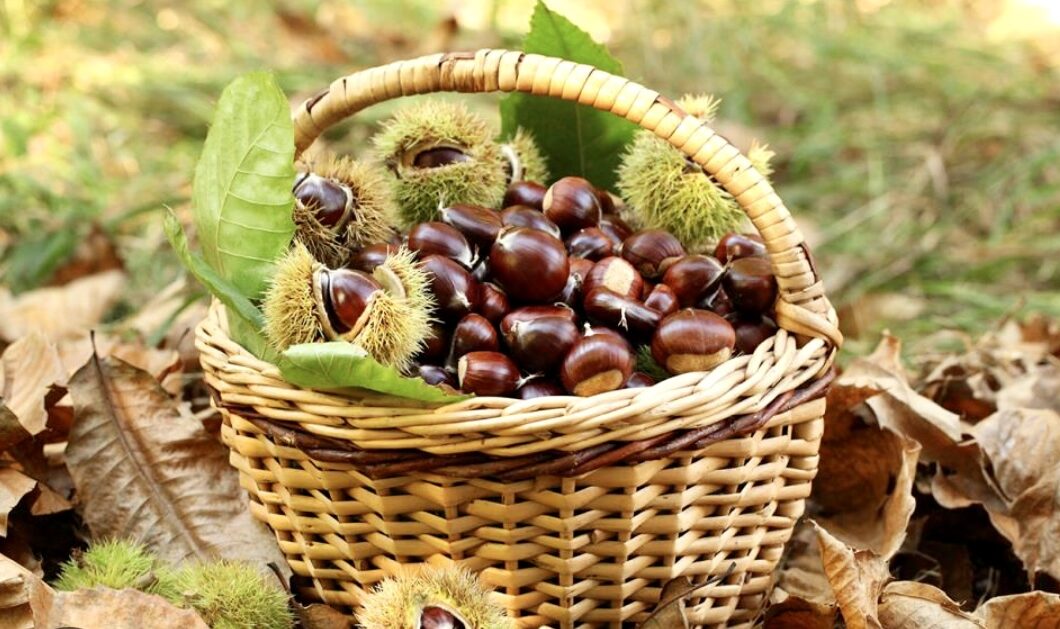Arts & Culture
Food In Italy
Travel In Italy
It’s time for chestnuts (and cake!)
Chestnuts have eaten throughout Europe since the Middle Ages and played a fundamental role in Italian agricultural history. In fact, from the 1500s to the 1800s, numerous drying sheds were built everywhere.
In Italy, chestnut harvesting generally begins towards the end of September, and in the past, this activity was considered one of the most important events in agricultural life.
Chestnuts have excellent nutritional properties, benefiting the intestines, circulation, and nervous system. Being very nutritious, they are perfect for boosting us against stress and fatigue, and they are also rich in iron, making them useful against anemia.
The arrival of chestnuts also heralds the arrival of autumn, unmistakable on Italian streets during holidays with the scent of roasted chestnuts. Their street vending is widespread throughout the Mediterranean area and involves nothing more than slowly roasting the chestnuts on embers.
Equally typical, especially in northern Italy, is a typically autumnal dessert: chestnut cake. It’s a typical dessert made with chestnut flour and enriched with raisins, pine nuts, walnuts, and rosemary. It’s difficult to determine the exact region of origin of chestnut cake. We’ll take the Tuscan version as an example, but this recipe is also popular in Veneto, Piedmont and Lombardy; all regions where chestnuts are a widely used ingredient in the kitchen. All of the variations have some things in common, the peasant origin of chestnut cake: water, chestnut flour, and rosemary.
The Tuscan recipe calls for:
– Chestnut flour: 500 g
– Water: 650 g
– Pine nuts: 100 g
– Rosemary: 1 sprig
– Raisins: 80 g
– Walnut kernels: 100 g
– Extra virgin olive oil: 40 g
– Fine salt: 5 g
Sift the chestnut flour into a large bowl and add the 650 g of water gradually, stirring with a hand whisk. When you have obtained a smooth and homogeneous mixture, add the chopped walnuts and whole pine nuts, making sure to set aside a small amount that you will use later to sprinkle the surface of the chestnut cake before baking it.
Grease a low round cake tin with a diameter of 32 cm and pour in the mixture, leveling it with the help of a spatula. Sprinkle the surface of the chestnut cake with the pine nuts, walnuts, and raisins you set aside, distributing them evenly. Finally, add the rosemary needles, drizzle with olive oil, and bake in a preheated static oven at 195°C for about 35 minutes. When a crust forms on the surface with cracks, and the dried fruit has taken on a nice golden color, remove from the oven and let it cool. At this point, you can serve and enjoy the Tuscan chestnut cake.
- abbey
- adventure
- All Saints day
- All’Antico Vinaio
- Alpine
- Amalfi
- Amarcord
- Andrea Bocelli
- aperol
- archaeology
- Armani
- art
- Assisi
- Basilica di San Francesco
- beach
- bella's house
- Bistrot Cafè 19.26 Firenze
- bologna
- bolognese
- branzino
- Bridge
- Calabria
- Calcio Storico
- cantine
- capri
- Car
- carnevale
- carnival
- Castiglioncello
- Cervo
- chestnut
- christmas markets
- cinema
- cinema museum
- cinque terre
- coffee
- collodi
- da vinci
- Dante
- Deer Hunter
- dessert
- drink
- drive
- Duomo di San Giovanni Battista
- easter
- eat
- espresso
- Events
- exiled
- family feuds
- Famous
- fans
- farro
- fellini
- ferrari
- festival
- film
- Filming
- firenze
- florence
- FOOD
- football
- football in italy
- Gay and Lesbian
- gelato
- gelatofestival
- Gods
- grape harvest
- harvest
- history
- italia
- Italian
- Italian Alps
- italian cinema
- italian easter
- Italian Life
- italian movies
- italy
- juliet
- juliet's balcony
- La Vita è Bella
- Ladri di Biciclette
- Lajatico
- Lake Como
- Lake Maggiore
- Lakes
- Language
- legacy
- leonardo
- LGBTQ
- little mermaid
- lizziemcguire
- locarno
- locations
- Lucca
- lucca summer festival
- manfredonia
- maria callas
- Medici
- Michael Antonio Cimino
- Milan
- milano
- Mona Lisa
- Museo Nazionale del Cinema
- museum
- napoli
- Nature
- Neorealism
- Officina dei Sapori
- oliveharvest
- olives
- opera
- Palace
- Palazzo Vecchio
- panettone
- Paraggi Beach
- pasqua
- pasta
- pinocchio
- pisa
- Pitti Palace
- Pizza fritta
- Pizzo
- places
- Podcast
- pompeii
- Ponte Vecchio
- portofino
- Puccini
- Puccini festival
- queer friendly
- Race
- relax
- relaxing sea
- renaissance
- Rome
- romeo
- ruins
- san galgano
- sea
- sea view
- See
- settembre lucchese
- shakespeare
- shop
- shopping
- sicily
- Siena
- sightsee
- Ski
- Snow
- Snowboard
- social clubs
- Sophia Loren
- soup
- sports
- story
- summer
- switzerland
- sword
- sword in the stone
- taormina
- tennis
- terracina
- The David
- The Godfather
- The Last Supper
- The Medici
- The Museo dell'Opera del Duomo
- The Uffizi Gallery
- tiramisu
- torino
- Toscana
- Tour
- tower of Pisa
- travel
- turin
- Twilight
- uffizi
- umbria
- university
- Unknown
- Vacation
- venice
- verona
- Vespa
- viareggio
- white lotus
- wine
- winery
- winter
- zuppa
